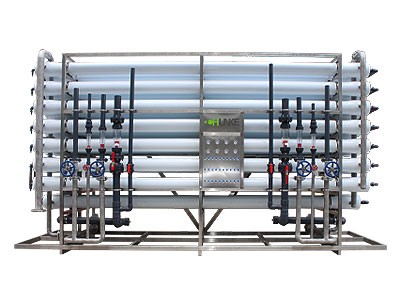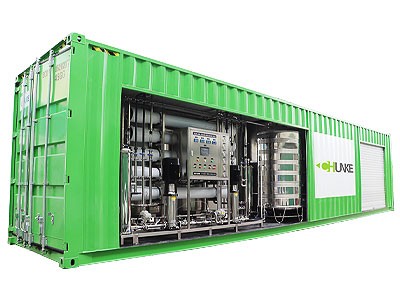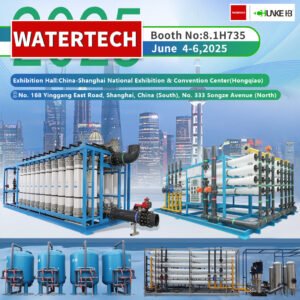Ozone reverse osmosis systems are best way to rid of bacteria and viruses in your treated water. Reverse osmosis removes most of organic and inorganic compounds in water. Reverse osmosis also removes most of bacteria and viruses, but in storage tank or carrying water with pipes, there can be contamination and viruses and bacteria can start growing in your water.

Ozone reverse osmosis systems are combination of reverse osmosis membrane filtration technology with ozonation equipment.
What is reverse osmosis?
By applying pressure, it drives water through sand, carbon filters and semipermeable RO membrane from an area of high solute concentration to a region of low solute concentration. When this step completes, you’ll have one side with only salt (solute) and the other with only pure water (solvent). This process separates dissolved salts, organics, microorganisms, pyrogens, and other volatile substances from water.
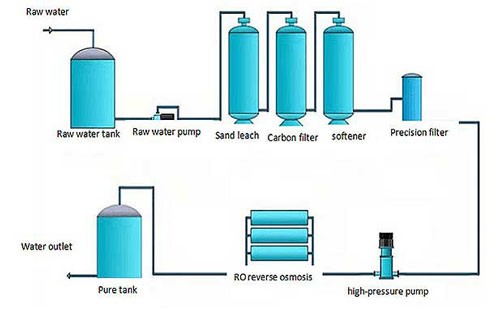
What is ozonation in ozone reverse osmosis systems?
Ozonation (also referred to as ozonisation) is a chemical water treatment technique based on the infusion of ozone into water. Ozone is a gas composed of three oxygen atoms (O3), which is one of the most powerful oxidants. Ozonation is a type of advanced oxidation process, involving the production of very reactive oxygen species able to attack a wide range of organic compounds and all microorganisms. The treatment of water with ozone has a wide range of applications, as it is efficient for disinfection as well as for the degradation of organic and inorganic pollutants. So, ozone is produced with the use of energy by subjecting oxygen (O2) to high electric voltage or to UV sterilizer radiation in ozone reverse osmosis systems. The required amounts of ozone can be produced at the point of use but the production requires a lot of energy and is therefore costly.

Reverse Osmosis vs. Ozonation (Ozone)
Ozone has a greater disinfection effectiveness against bacteria and viruses compared to chlorination. In addition, the oxidizing properties can also reduce the concentration of iron, manganese, sulfur and reduce or eliminate taste and odor problems. Ozone oxidizes the iron, manganese, and sulfur in the water to form insoluble metal oxides or elemental sulfur. These insoluble particles are then removing by post-filtration. Organic particles and chemicals will be elimination through either coagulation or chemical oxidation. Ozone is unstable, and it will degrade over a time frame ranging from a few seconds to 30 minutes. The rate of degradation is a function of water chemistry, pH, and water temperature in ozone reverse osmosis systems.
So, ozone can be use as post treatment for bacteria and viruses or pretreatment for iron, manganese and sulfur.
But Reverse Osmosis is a main treatment system, reverse osmosis remove more than 99% of salt, minerals, organic and inorganic compounds also remove bacteria and viruses.
Therefore, we are using ozone reverse osmosis system as combination to get safest water.
Advantage of Disinfection of Ozone in Ozone Reverse Osmosis System
- Rapidly reacts with bacteria, viruses and protozoa over a wide pH range.
- Stronger germicidal properties than chlorination.
- No chemicals are added to water.
- Also efficient for organics degradation and inorganics removal.
- Removes colour, taste and odour
Ozone Reverse Osmosis Systems for Bottling Water Production
Does Ozone Generator kill Covid-19 Viruses in water treatment?
Ozonated water can help you live a healthier lifestyle. If you have rheumatoid arthritis or inflammatory bowel disease, reducing inflammation may help you manage your symptoms. Because ozonated water can kill viruses on contact, it can help you avoid viruses like the flu or COVID-19.
Additionally, due to the potency of Ozonation, water can become entirely oxidization in a short amount of time, so you won’t have to wait long for your water to be filtered. When the ozonation procedure is done, all viruses, protozoans, and bacteria should be removed from the water.
What should you take care using ozone generator?
Your water system may require treatment in advance to remove some of the hardness in the water, which aids in the prevention of carbonate scale formation. So, ozone reverse osmosis system together very effective.
By-products of Ozonation are still being studied, and some of them are probably carcinogenic. Brominated by-products, aldehydes, ketones, and carboxylic acids are examples. This is one of the reasons why an activated-carbon filter might be used in the post-filtration system. Also, you understand why we call ro purifer as ozone reverse osmosis system.
Because Ozonation does not leave any persistent disinfectant components, regeneration of bacteria or viruses is not stopped. So, it is good for you to choose ozone reverse osmosis systems.
Ozone vs. Chlorine for Water Disinfection
Both ozone and chlorine can be used to treat microorganism, bacteria and viruses. So, the question when it comes to comparing ozone vs. chlorine for water disinfection is, “Which is better?” Chlorine has long been the default choice. It is a powerful oxidizer and is very effective at treating many pathogens. However, factors such as environmental issues, long-term cost, particulate removal effectiveness, and health issues have made ozone the preferred choice for many municipalities.
Ozonated Water Disinfects Better than Chlorine
Ozone, like chlorine, is an oxidizing agent effective at eliminating bacteria in water. It is recognized as among the strongest and fastest commercially available disinfectants and oxidants for water treatment. While chlorine does kill many microorganisms, it cannot treat all water-borne pathogens if used at EPA approved doses. On the contrary, ozone can while remaining well within EPA regulations. When ozone decomposes in water, the free radicals that are formed, hydroperoxyl (HO2) and hydroxyl (OH), have great oxidizing capacity and play an active role in the disinfection process. Bacteria are destroyed by protoplasmic oxidation, which results in cell wall disintegration (cell lysis).
So, we use ozone reverse osmosis systems to produce best uality water.
How Does Ozone Water Treatment system Work?
Ozone water treatments involve plant generators with two electrodes, where the electrical current passes through the electrodes, known as corona discharge. So, ozone reverse osmosis systems include RO Plant with ozone generator.
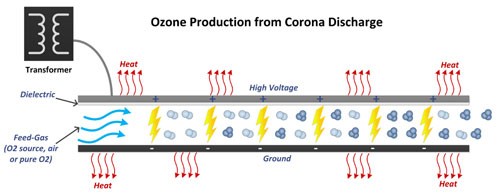
Ozone water treatment units are installed as a point-of-entry system where ozone mixes with the water being treated. Turbulence and bubbles are created, to ensure the ozone treats as much of the water as possible. The greater the water flow, the greater the turbulence, and therefore, the more effective the ozone water treatment.

